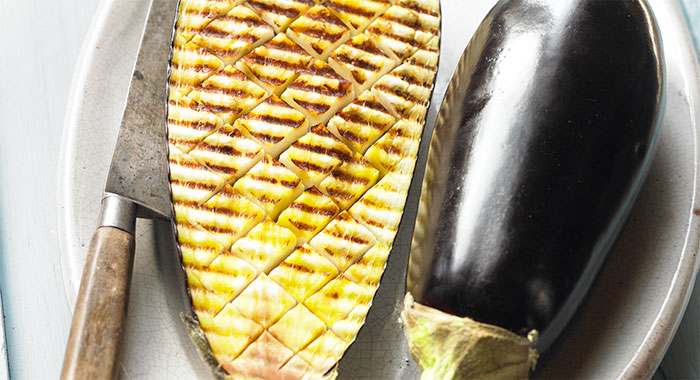
Pronounce it: oh-ber-geen
Although it’s technically a fruit (a berry, to be exact), the aubergine is used as a vegetable. It’s native to South-East Asia, but is grown all over the world, and there are many different varieties, including the bulbous, glossy, deep purple zepplin-like types common to Mediterrean cuisine; the small, tubular Asian types; the small, plump and ivory examples (hence ‘eggplant’, its name in the United States and Australia); or the scarcely-bigger-than-a-pea varieties grown in Thailand. All varieties share the same bland, mildly smokey flavour and flesh that’s spongey when raw but soft when cooked.
Find out about the health benefits of aubergines with our guide.
Availability
All year round, but at its best from late May through to mid October.
Choose the best
Firm, smooth, glossy examples, with bright green stalks. A fresh aubergine should feel fairly heavy.
Prepare it
To avoid discolouration, cut just before cooking. In the past, recipes called for aubergines to be sliced and salted before cooking to reduce their bitterness. As modern varieties are much less bitter that’s no longer necessary, unless you’re planning to fry them; aubergines soak up oil like a sponge and salting helps reduce that.
Store it
In the salad drawer of the fridge – they’ll keep for a couple of days.
Cook it
Aubergine is often found baked in a Greek moussaka or Provençale ratatouille; roasted and pureed with garlic, tahini (sesame seed paste), lemon juice, salt and cumin for the Middle Eastern dip, baba ghanoush; thinly sliced and fried to make aubergine crisps.
Be the first to comment on "Aubergine"